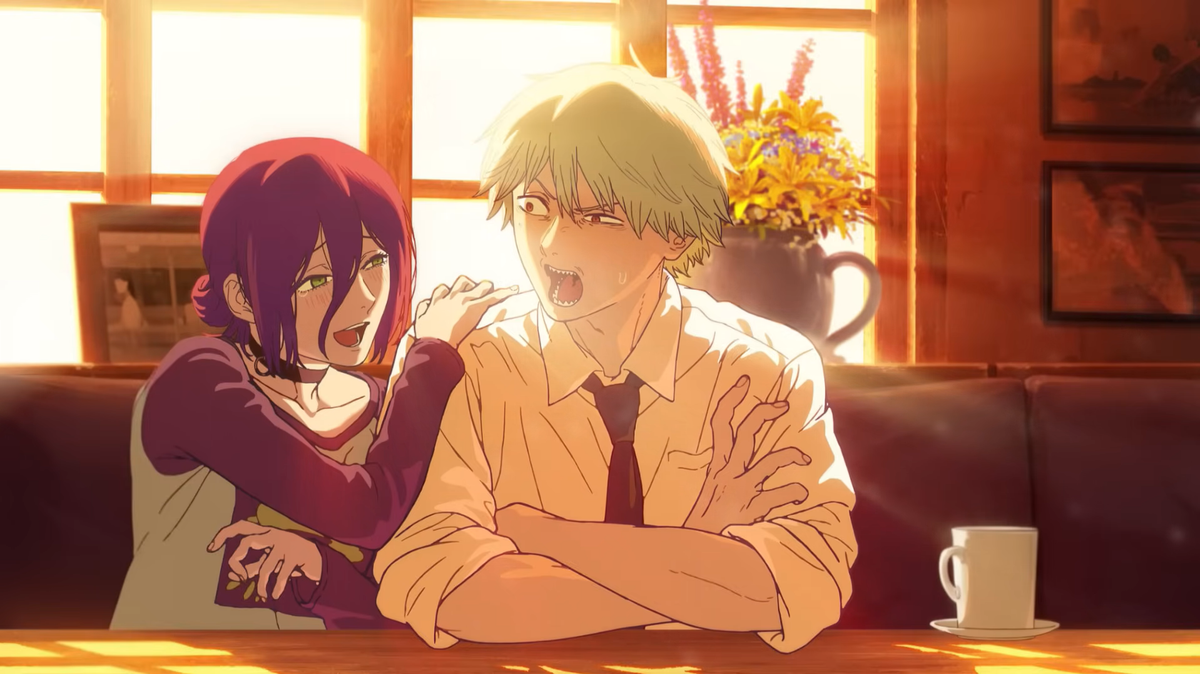
I should have been hyped for the Chainsaw Man movie. This is a series that I have agonized the past five years: re-reading Part One of the manga over half a dozen times, and keeping up weekly with Part Two. Hours of my life spent obsessively dissecting author Tatsuki Fujimoto’s characters and narrative construction, yapping my findings to friends, as they nod along when I gush about a series deeply meaningful to me. I have never cried reading Chainsaw Man, but embarrassingly I have wept talking about the thematic resonance of its tale. A wounded, but triumphant middle finger towards nihilism, framed through the tragic lens of a minor slowly gaining lucidity that he is being groomed and sexually assaulted by those he deems as his saviors. While not my favorite section in the series, the Reze arc is arguably the most pivotal portion of the story. A crucial turning point that encompasses, and lifts the veil of this thematic direction the franchise will trek down. A treacherous path haunting the series to this day.
Despite this, I wasn’t exactly fond of the first season of the show. Although the anime covered most of the manga’s early story beats faithfully, former series director Ryu Nakayama's experimental nature of the production made for a debut season that missed the mark for me in key areas. I can respect Nakayama’s artistic ambitions of injecting a live action cinematic flair within an animated medium, but this direction consequently made for sluggish pacing during the high octane moments, and a tone more moody than manic as it shuffled to reach a 12 episode quota. As its own thing, it's a solid companion piece to see a different interpretation of Fujimoto's story, but I would always suggest reading the manga over watching the anime.
Needless to say, I wasn’t exactly enthused upon hearing how the Reze arc would be turned into a feature film. Countless pessimistic questions plagued my mind: How can they turn a short arc into an hour and 40 minute feature? How bad are they going to pad out the fights? Will they go completely against the point of the arc and add filler scenes with Power? My concerns were slightly alleviated with Studio Durian’s adaptation of Fujimoto’s one shot manga, Look Back, translating an even shorter story into an hour film. But I was still nervous on whether studio MAPPA’s second stab at Chainsaw Man could execute this shonen's critical juncture beyond just pretty visuals. Therefore, I am so thrilled and relieved to say that watching the film completely melted away my concerns, because the Reze movie is a mostly brilliant cinematic adaptation of Tatsuki Fujimoto’s masterpiece, worth checking out on the biggest screen possible.
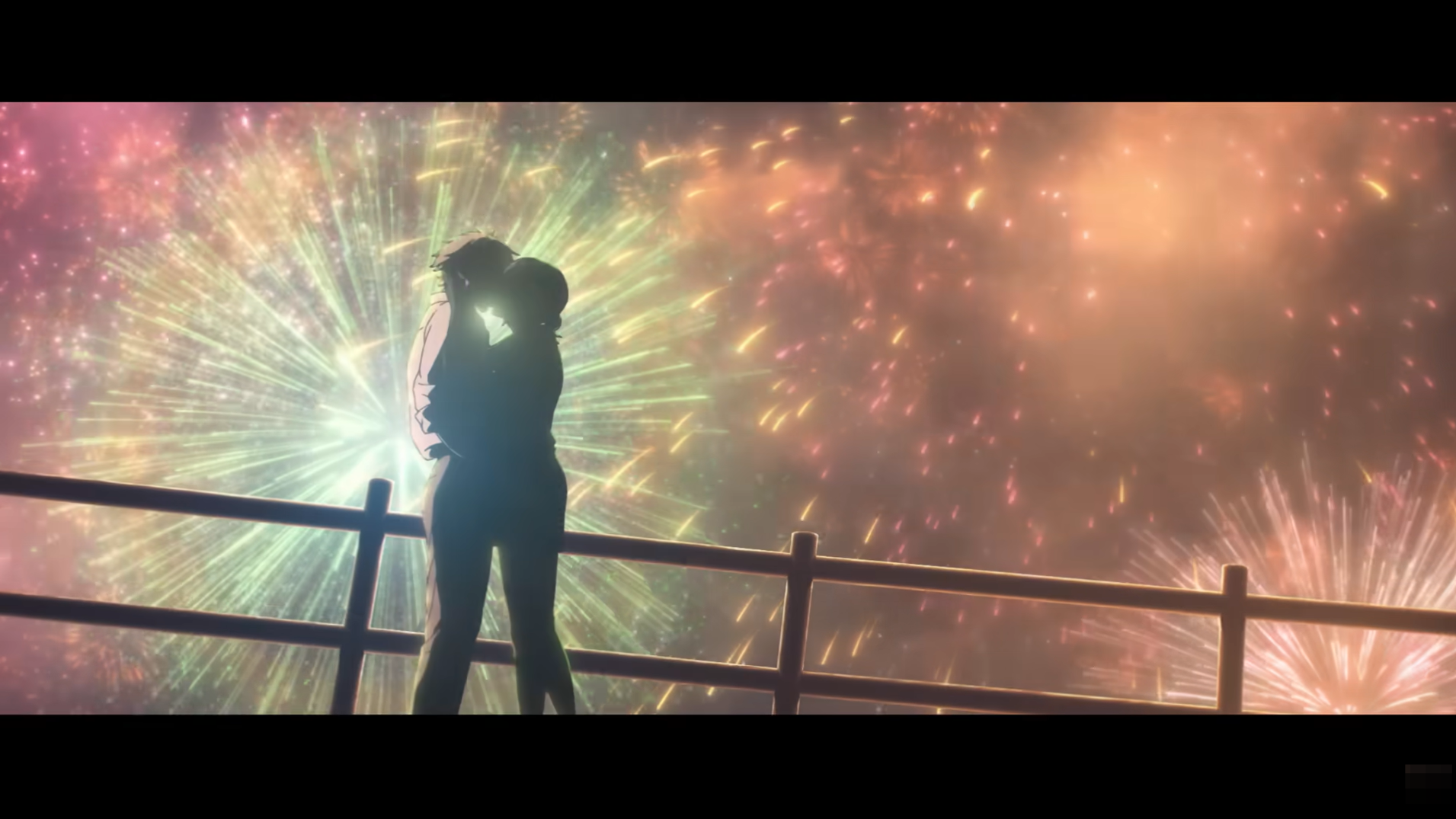
Regarding spoilers, this review will be spoiler free. However, I am deeming anything shown by the film’s marketing as a non-spoiler, being fair game to openly discuss.
A major proponent of season one was Denji learning the difference between sexual and romantic attraction. At its core, the Reze arc expands on this facet, being a love story that explores what romance even consists of for the teenager. As a result, despite being a battle shonen filled with gratuitous violence where rain turns into a shower of blood and guts, this arc shows restraint by frontloading the first half with slice of life scenes. Much like the franchise as a whole, the movie is in top form when focusing on these mellow moments. Normalcy is a phrase brought up often, and the scenes depicting Denji’s current lifestyle, versus his prior “normal” living conditions, goes the distance in painting the messy strokes of the main lead.
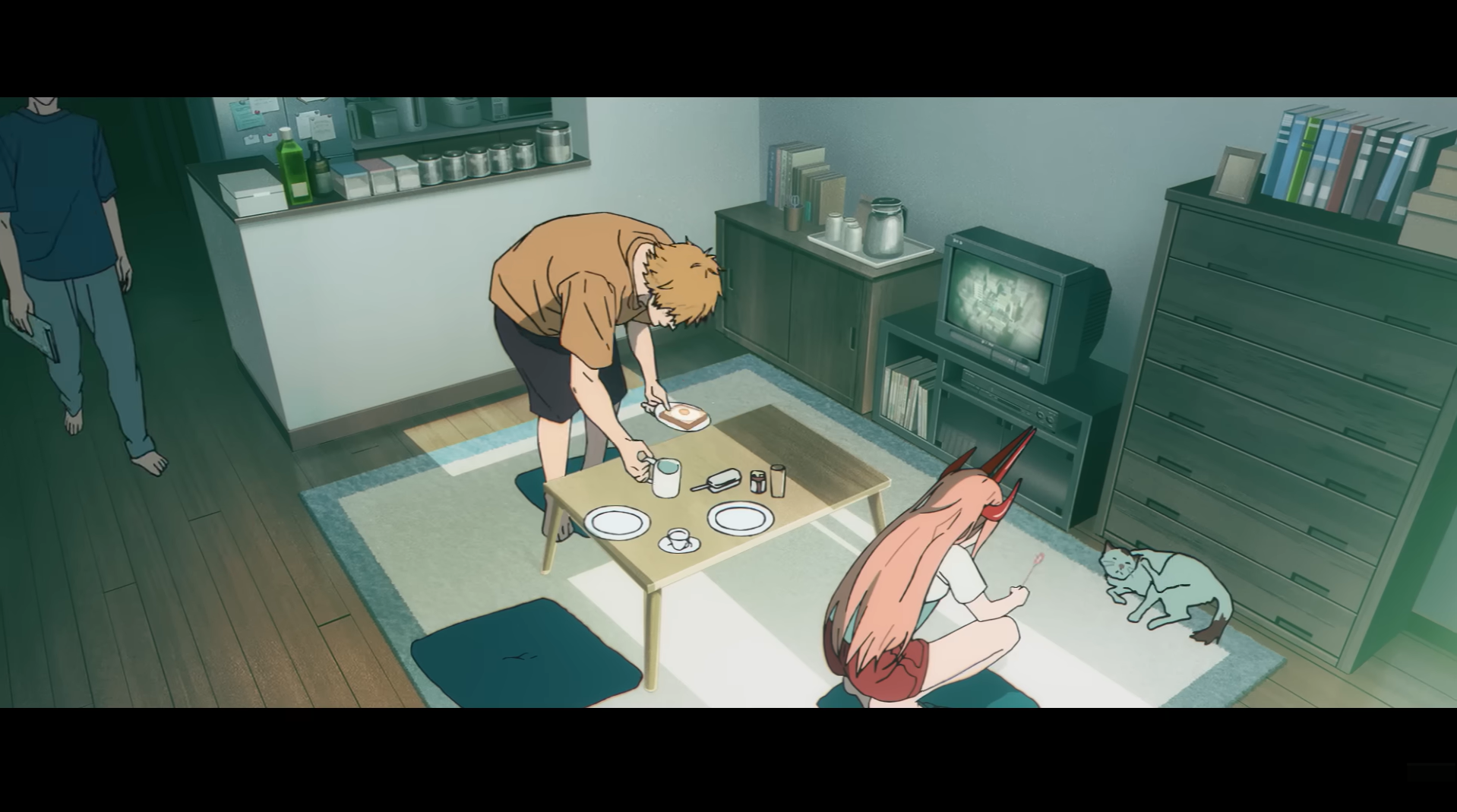
The tragedy of the brash blonde is how stunted his mental development is. This is a teen who spent most of his formative years homeless and malnourished. He had no parental figures to guide him and no schooling to learn basic education or to be around kids his age. Denji’s “normal” life consisted of working dangerous jobs for the yakuza to pay back the debts inherited by his deceased father. Luxury for the boy means sleeping in a warm bed, under a roof capable of shielding him from the downpour of rain. Luxury means the fleeting dream of waking up to enjoy three hot meals a day, including toast with jam. A dream that would come true when Denji meets and falls for the woman who would provide him these treasures: the seemingly warm and kind Makima, a woman with a cold, blank smiling gaze.
Centering the start around a movie date between the two works both in favor of the story, while also smoothly transitioning the tale into a standalone feature. Essentially, it's an effective refresher that reintroduces the dynamic of Denji and Makima that festered through season one. Mainly, how the latter is an adult grooming a teenager, dangling the promise of basic human needs and intimacy, by taking advantage of his lack of life experience and sex drive. Collaring and commanding a dog to do her bidding, having him enlist as a Devil Hunter to kill the Gun Devil. This status quo established at the end of the first season serves as the narrative bedrock when the arc’s inciting incident occurs: Denji meeting the film’s namesake, Reze.

The purple haired girl exists at a unique juncture of the story. She is introduced late enough where the core cast of characters have been established, but early enough where she has to leave a significant enough impact to pave the way for what’s to come. It’s a daunting task, one Fujimoto previously nailed when constructing the original scenario, the ramifications reverberating through rest of Part 1, and only getting stronger in the ongoing Part 2.
Subsequently, screenwriter Hiroshi Seko’s adaptation does the mangaka’s masterpiece justice, delivering deeply moving pieces of character writing. As the film’s primary antagonist, the titular newcomer’s role in the plot provides the most compelling narrative hook of the love story premise: comparing and contrasting how Makima and Reze treat Denji. Consequently, how the boy’s perception on what a fulfilling love life constitutes, one fed to him by a groomer using mental and physical advances, gets upended by this new girl.

As stated before, an emphasis is put on scenes depicting daily life. The two teens hang out at a coffee shop together, goof off after insisting on studying, and laugh while participating at the stalls during a festival, just to name a few. These scenarios construct the depth and complexity of Reze through surface level simplicity, witnessing how the basic actions of laughing or flirting with Denji, paints a subtextual intrigue of the character’s deeper, heartbreaking layers. Essentially, she’s a superficial puzzle box that baits you with a key already next to it, but using it reveals a deeper treasure trove of complex turmoil that has shaped her simplicity. Likewise, Reze’s role in the arc contains the key for Denji to open the puzzle box of his own psyche. The poor boy is experiencing a world of firsts beyond just material needs for survival, partaking in events with a girl because they both enjoy each other’s company, instead of Makima dragging the hormonal teen by a leash.
All in all, the dynamic between these three demonstrates how simple does not automatically mean shallow. Romance as a genre of fiction is emblematic of this. Though not a type of story I’m usually fond of, I acknowledge a major compelling tenet of the genre is exploring how a raw, blindingly one dimensional feeling of love can be just the tip of an obfuscated obelisk, or, be the stepping stone to explore in depth character arcs stemmed because of this passionate emotion. Denji’s moving transformation through the film embodies both of these, and is the result of the narrative prioritizing the mundanity of slice of life as a method to influence his motivations. Turbulent tragedies and complex catharsis born from opening the surface level door of normalcy into a deeper abyss.
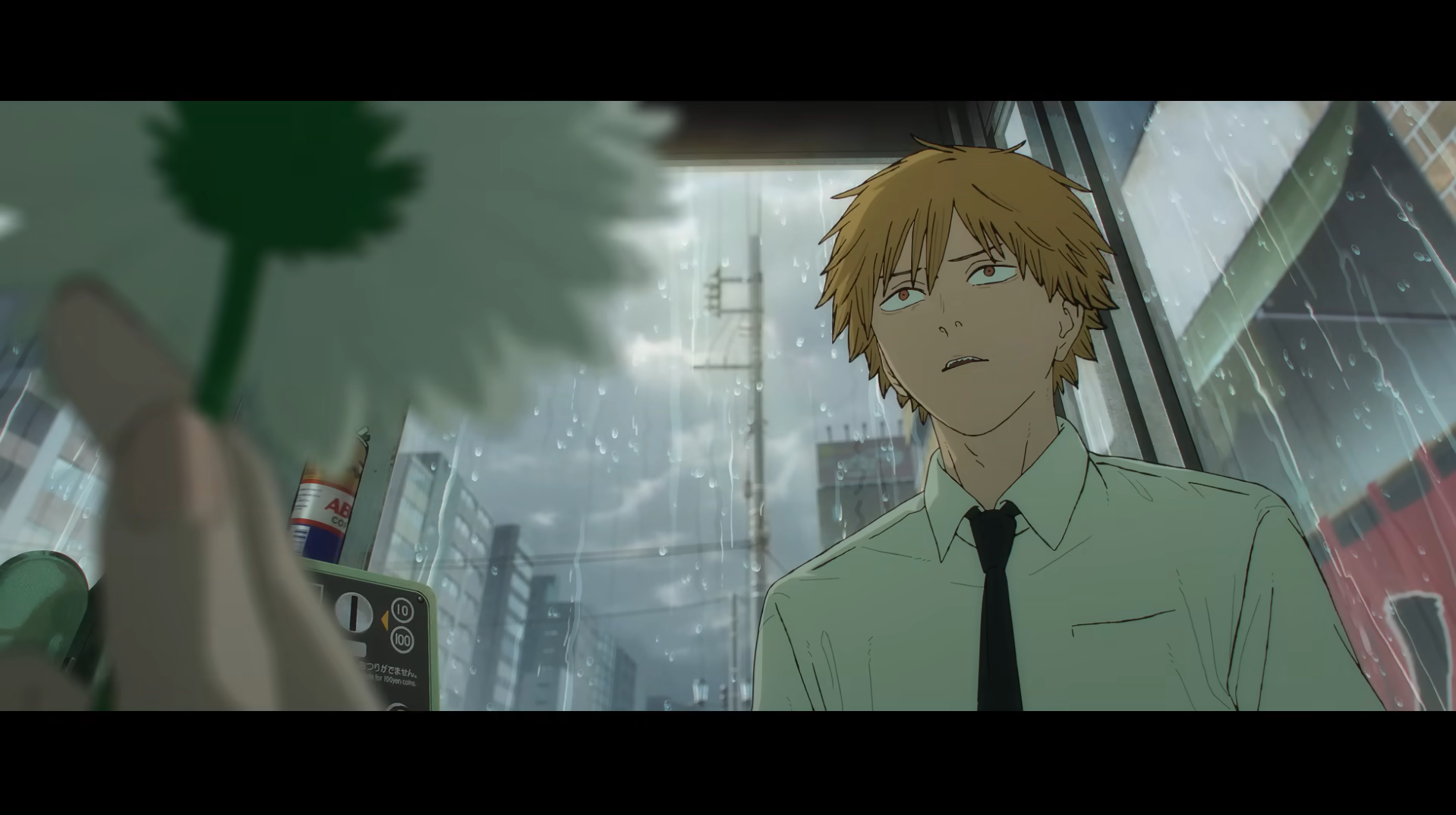
Furthermore, I adore how Chainsaw Man makes this narrative technique diegetic to each character’s thought process. The full scope will become more apparent in future storylines, but as it stands, this stepping stone arc excels at reinforcing and expanding on this philosophical underpinning within its central character conflicts. Examining and understanding the seemingly superficial motivations and characterizations is not only an exercise of empathy for the viewer, but also for each member of the cast viewing anyone other than themselves. It makes for both cooperative and contentious interactions.
Continuing with depth through simplicity, Fujimoto’s works tend to circumvent the anime staple of lengthy monologues, choosing instead to emphasize an eccentric cast speaking short, often unhinged phrases. This style is one of the proponents that makes his reads fly by at a breakneck pace. In addition, he sparingly implements flashbacks within his stories. Both of these are recurring tropes in anime that have endlessly been meme’d on. That’s not to say I dislike these writing choices, or think they can’t be done well. I would be hypocritical as a fan of series such as One Piece and Oregairu.

Yet, I adore how Fujimoto bypasses these narrative tools, confidently trusting his skills as a storyteller, writer, and illustrator to create a compelling main cast without pausing the plot for a juicy backstory or on-the-nose speeches as a crutch. Each person’s demeanor, way of dress, response to other people and situations; all of these are the mechanisms that smoothly operate a narrative laser focused on extrapolating profoundness through the present. His knack as a visual storyteller allows him to make the most of the pictures in what's essentially picture books, providing emotional heft to his crude writing style.
With the adaptation to film, these quiet moments shine brighter thanks to the advantage the cinematic medium offers with movement, color, and sound. Director of Photography, Teppei Ito, translates this boon from page to screen beautifully, letting his storyboarding and cinematography do the heavy lifting of telling the story. Thanks to the subject matter of the arc, the Chainsaw Man movie contains the visual language found in romance films. Warm hues emphasized by sunlight or lanterns elevate the coziness within the slice of life scenes. The serene coolness of night with moonlight illuminating the blues of water.

As a byproduct of Fujimoto's involvement, MAPPA’s new art style feels reminiscent of the drawings in the source material. The color palette is much more saturated, with creative utilization of color compared to the visual direction of season one aiming for realism. Despite being produced by a different studio, this production gives a similar visual flair to the film adaptation Fujimoto’s one shot, Look Back. An even more on the nose comparison would be the similarities to the colored covers of each manga volume of Chainsaw Man.
Circling back to cinematography, there are liberal uses of close ups and point of view shots to sell the intimacy between these two leads. What I found impressive is how various scenes are animated in a way to mimic handheld cam shots, a technique often employed to emphasize closeness. The uneven bounciness of the frame emulates the realism of a camera operator walking with the recording device. I found it to be a happy medium between the cinematic approach of the first season, and the surreal snappiness of the source material. Whether it's moments ripped straight from the panels of the manga, or extended scenes of filler (content not present in the source material), these techniques adapt, but still retain the absorbing essence of silence that makes Fujimoto’s artistic vision so powerful.
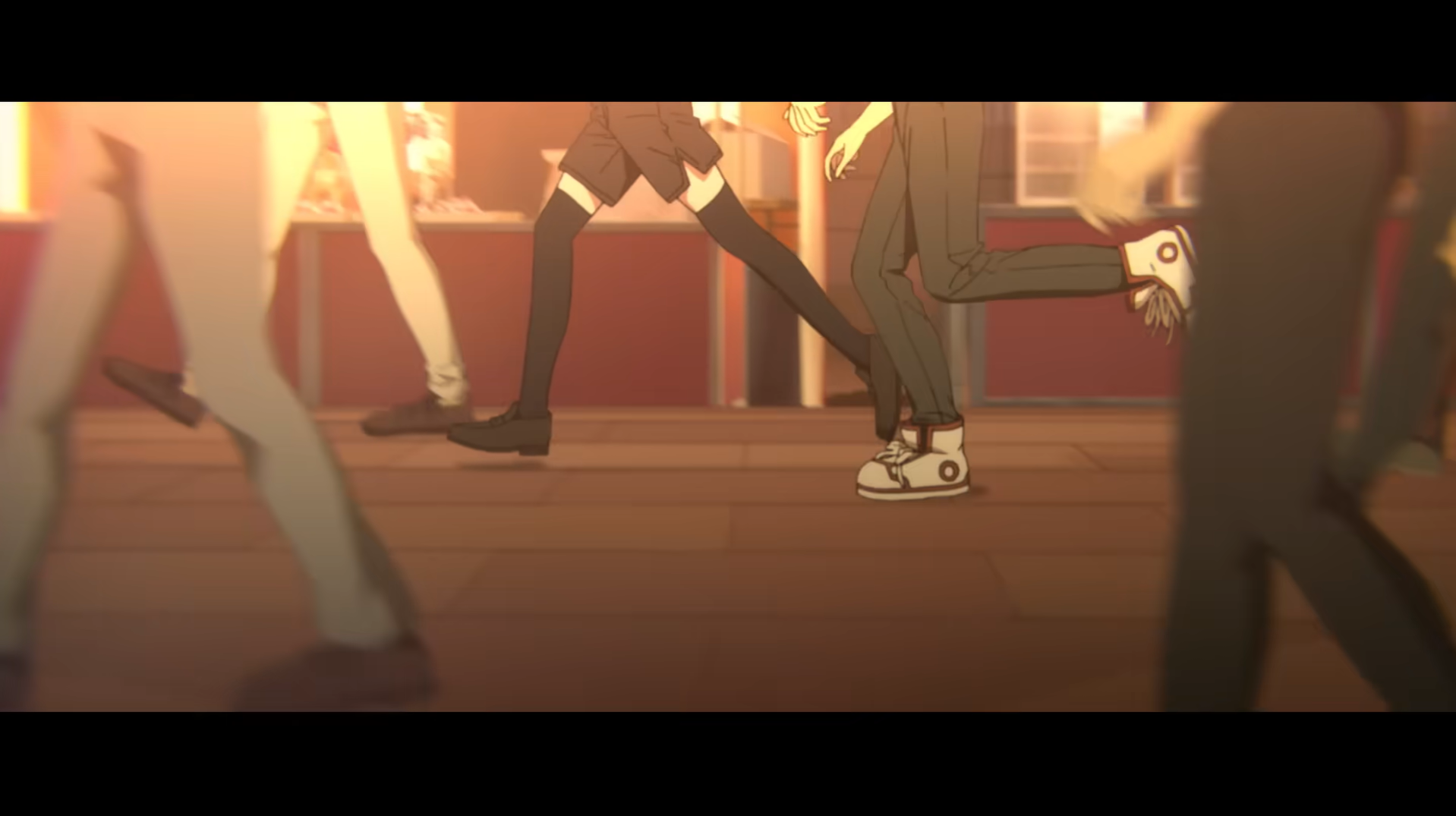
Much like season one, these elongated moments, lasting multiple minutes, are at their best when seamlessly blended into the pre-existing slice of life scenes. Each character trying to make the most out of normalcy, before the chains of their devil hunting job suspends them over the ever present grasp of death. The pool and festival scenes are the most poignant examples in particular.
These memorable moments are the peak of the film’s cinematography, relying mainly on each piece’s visual construction to show the empowerment and joy of the main duo’s simplistic interactions. At most, the former scene has them utter a few words to each other, with the latter section being completely voiceless. Even upon my third rewatch, I was moved to tears by the innocence and purity on display, the silence speaking so much volume to how these lost souls feel and grow.
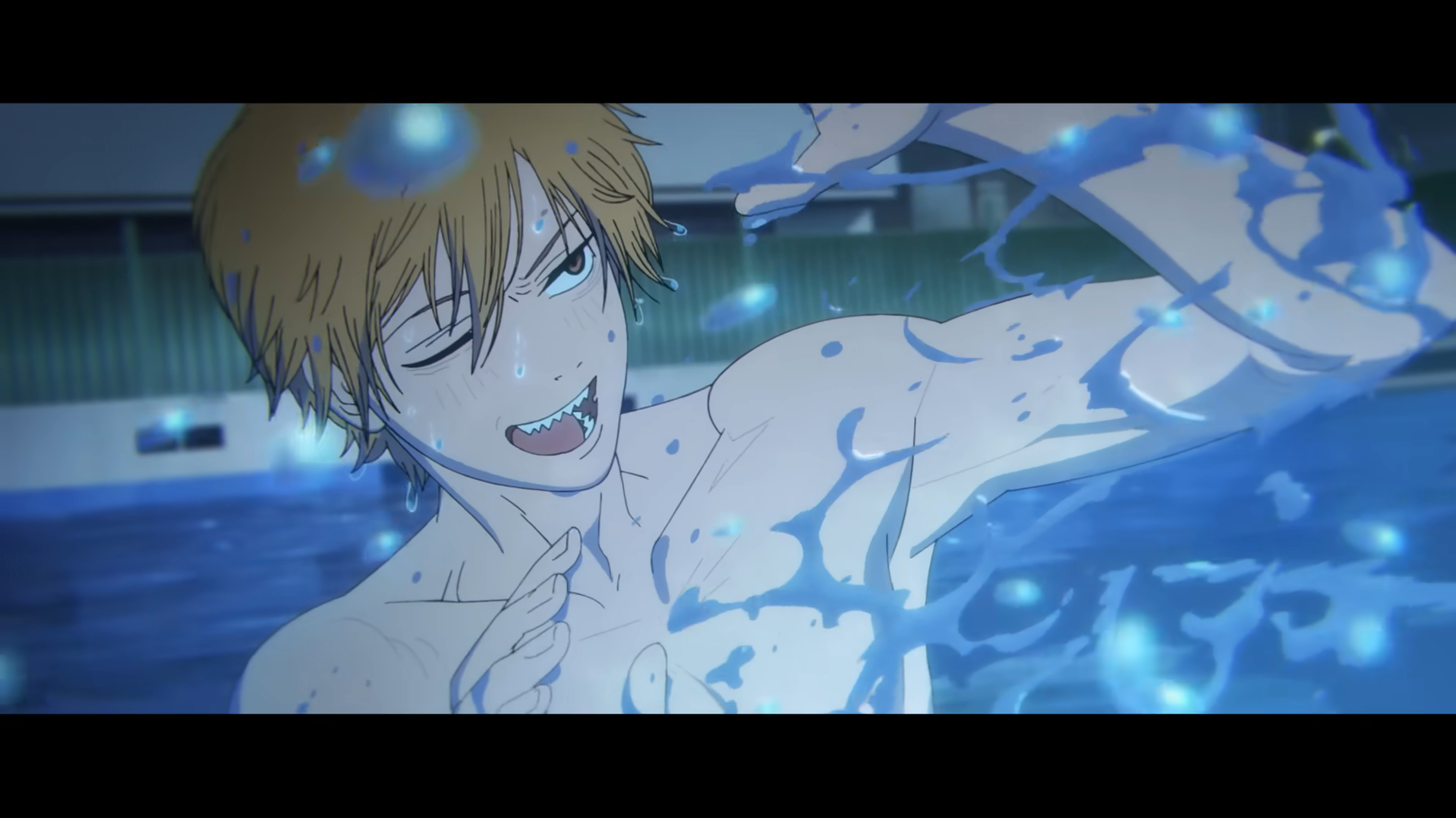
Kensuke Ushio’s immaculate score further lends cadence to the Reze arc utilizing the medium of cinema to elevate the mellow moments of its original work. The music allows the feelings of the characters speak through the silence. With Chainsaw Man being an action shonen, there are hype, electronic tunes during the fights to get your blood pumping. Moreover, the intro and outro vocal tracks are no slouch either. Still, it’s the bittersweet emphasis of piano and strings that sell the love and longing of the romance genre.
Reze’s theme is the most emblematic of this. The composition is in the B minor key signature, one whose tone successfully captures the conflicting character of the movie’s namesake beautifully. It’s calming, soothing, yet uncertain. The notes rise towards a sweetness of almost grasping onto hope, only to be dragged down by the bitterness of melancholy. Every time her leitmotif would worm its way into the score (and your ears!), you bet it would be a coin flip on being one of the sweetest things you have ever seen, or one of the most gut wrenching. Often it'll squeeze and crush your heart being both.
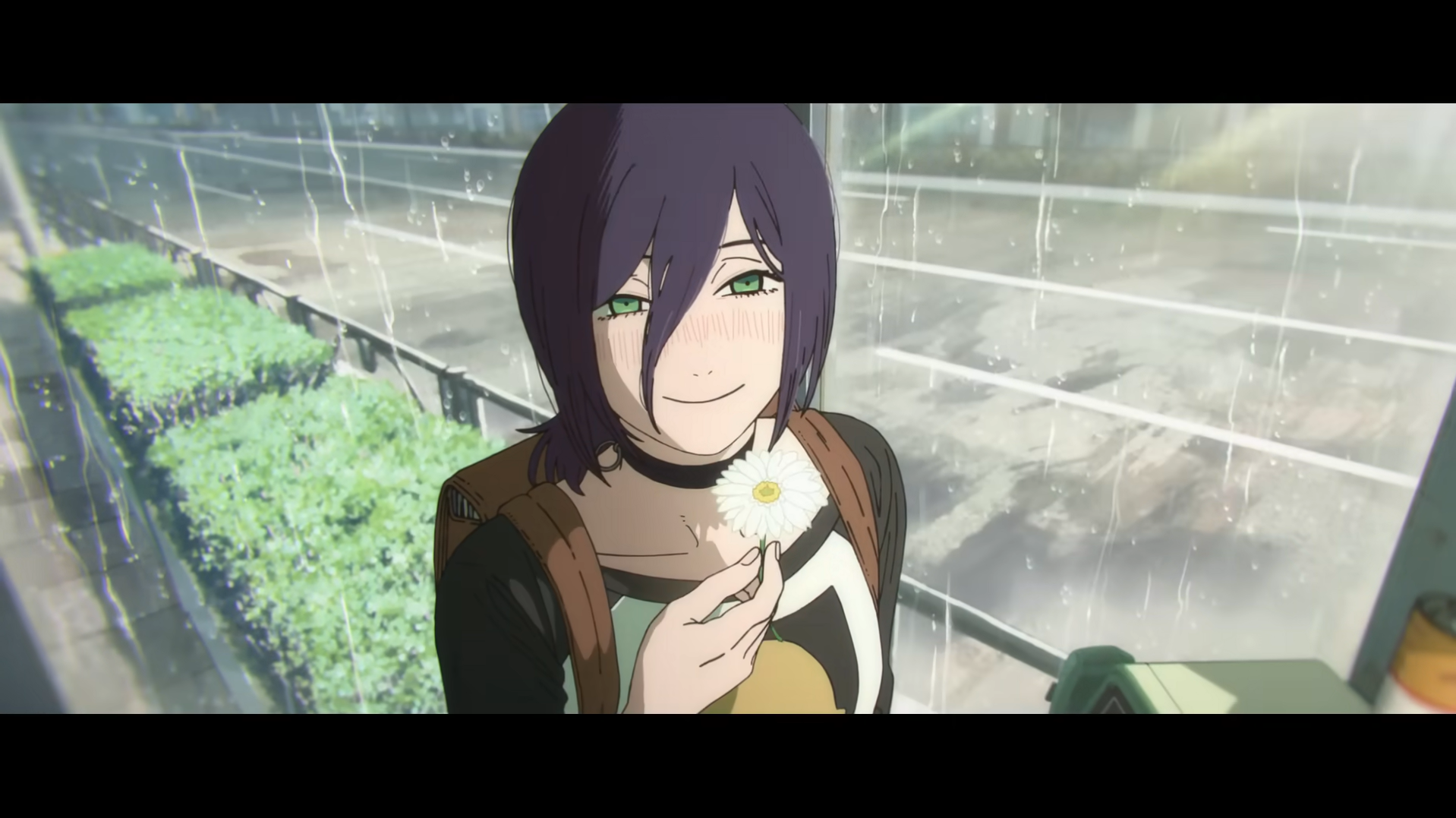
Now if I were to be dragged kicking and screaming into a room of gooners simping over Makima unless I criticize the slice of life portions, I would begrudgingly bring up two small nitpicks. While the bulk of this review has been focused primarily on the “will they won’t they” between Denji and Reze, there are a couple concurrent plot points smaller in scope that converge later in the runtime. I want to preface that the stories themselves are great, both as individual, thematically consistent tales, and as set up for the mayhem once the fighting starts. Specifically, the B plot between Aki and Angel is a riveting expansion on the tragedies the former endured in the first season, and paves the trajectory for how he grapples with hate and vengeance in future arcs. Regrettably, what is a non issue in the medium of manga thanks to each page turn priming the reader for some sort of visual transition, results in jarring visual, auditory, and tonal transitions in cinema when conveyed through the realm of cinema. These abrupt POV shifts are infrequent to the grand scheme of the runtime, but they occur just enough to be a small distraction.
Even more minor is the existence of a post credit scene. The issue isn’t that the scene itself is bad, quite the opposite actually. It’s a fun and direct adaptation of the final moment of the arc, one that wraps a bow on Denji’s development in this section of the story, and sets the stage for the most emotional part of this saga. What’s baffling is how such an important scene is relegated to a timestamp where most of the audience would have left. Again, the moment itself is fine, it just fumbles in where it's placed.
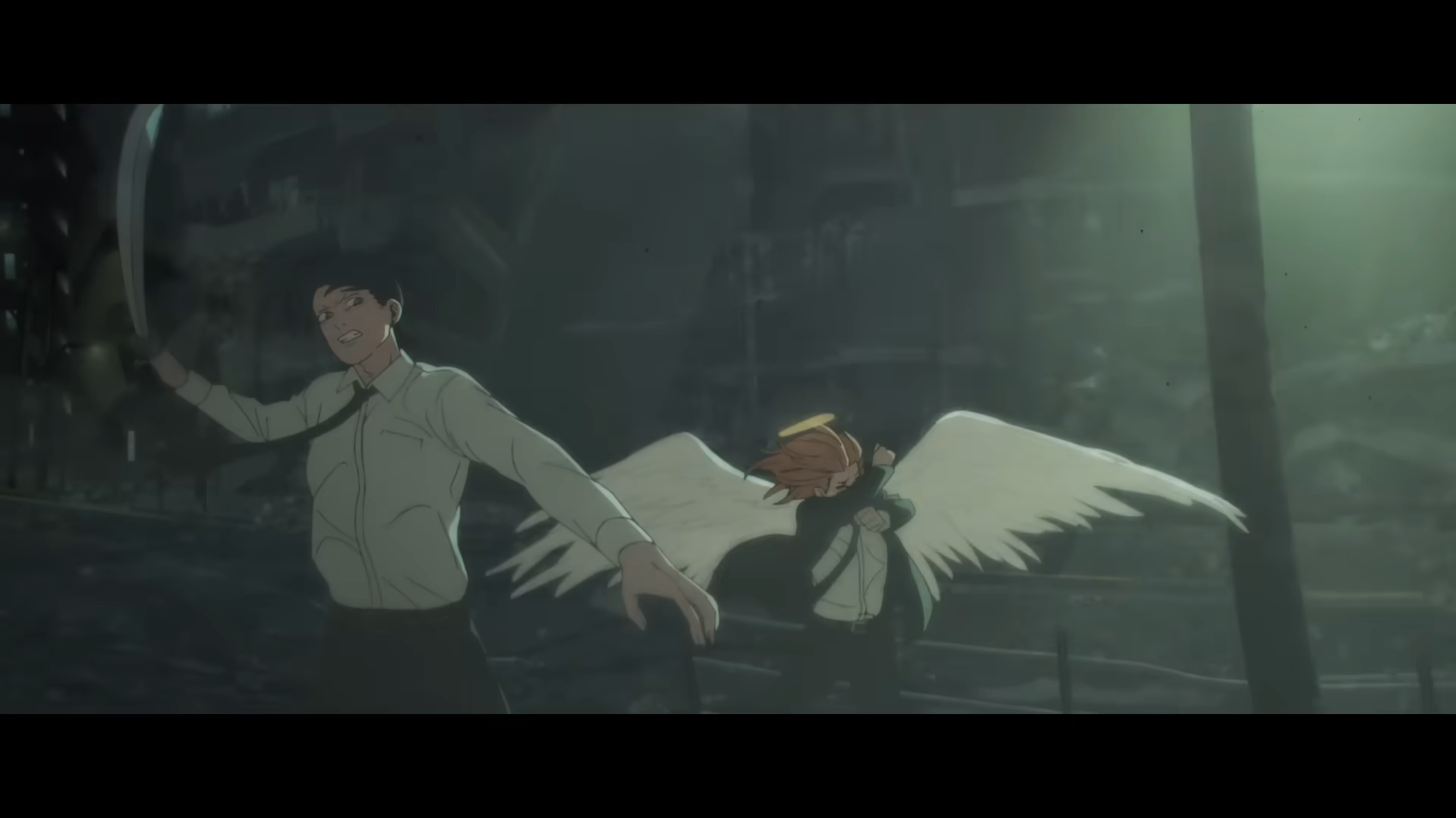
When compounded together, these are only slight gripes, ones that become even more insignificant when pit against the sheer quality of everything else. I have experienced this arc nine times now: six from reading the manga and three from watching the film, regardless I still find myself swept up in the crazy, yet earnestly empathetic construction of Fujimoto’s world and characters. A world I re-experienced through a much more satisfying animated interpretation than the previous attempt.
Chainsaw Man The Movie is one of those films where you can feel the effect of its cinematic elements entrancing the audience. Experiencing the mesmerizing visual direction and bittersweet soundtrack in IMAX left each of the three packed theaters I attended in awestruck silence during pivotal moments for Denji and Reze. A stillness that allowed the fuse of love Denji lit for Reze to glow and crackle through the auditorium, as this teenage boy experiences love for the first time that doesn't involve adults taking advantage, or sexually assaulting him.
Then the fuse runs out, and the bomb explodes...

From the midpoint onward, Chainsaw Man - The Movie: Reze Arc is nonstop balls to the wall action between a boy who can turn his body into chainsaws, and a girl who is a walking bomb. Basically it turns from a date night movie into a date fight movie. This is regrettably where the film’s quality occasionally wavers thanks to the pacing issues present in the first season creeping in. Even though the fight in the manga contains a few more chapters than the casual moments, the bouts feel a lot shorter in the source material simply because reading pictures is faster than reading words. Fujimoto excels at placing substance in his stylish action, but when he sporadically includes something purely for the rule of cool, he keeps the style over substance brief to jolt the reader with dopamine before getting back to flair with depth.
Admittedly, the film does attempt to reflect this by the set pieces being the shortest part of the feature. On top of this, one of the lesser interesting characters in the movie, the Typhoon Devil, is established early on as a supporting villain, existence to be fodder. As a result, he mercifully takes up the least amount of screentime in all the chaos. Still, the phenomenal balancing act Fujimoto crafted when incorporating the exhilarating, but short stint between Chainsaw Man and the weather monster feels lost in translation. In an animated format, their fight lingers just long enough to where the bloody streams and explosions feel exhausting; vapid visual stimulation being dull instead of thrilling. To make matters worse, it drags on long enough to where the Bomb girl, the more compelling antagonist, is off screen longer than necessary. To be fair, my qualms with the pacing were dampened when lowering my expectations upon rewatches, but I still needed to remind myself that Reze was in this movie called the Reze arc during this phase of the action.

What wasn’t alleviated upon rewatch, are issues that have plagued big battle shonen productions over the years: visual clarity. MAPPA’s priority to have the animators [whom the studio has notoriously overworked in the past] squeeze in as many drawings to simulate nonstop motion feels misplaced, resulting in a sludge of squash and stretch that detracts instead of enhances. Sure, there are a lot of frames depicting the insanity of Denji and Shark Devil Beam navigating the vortex of rain and debris. Chaos and sloppy movement is the point with such an erratic setting for a fight. Woefully, the execution of awkward camera angles and an abundance of particle effects makes for a set piece that is blindingly hard to follow, instead of one that satisfyingly bombards my retinas.
That's not to say the worst of the Reze movie doesn't have some reliably entertaining and well done bits of animated goodness. Is Denji spinning a shark around the air like a Mario & Luigi Bros. Attack to knock fireworks out of the sky in the manga? No, it's padding and filler. But is it fun filler? Heck yeah it is. I just wish there was more restraint when adapting the least important part of the entire arc, both in the runtime and animation inside the typhoon.
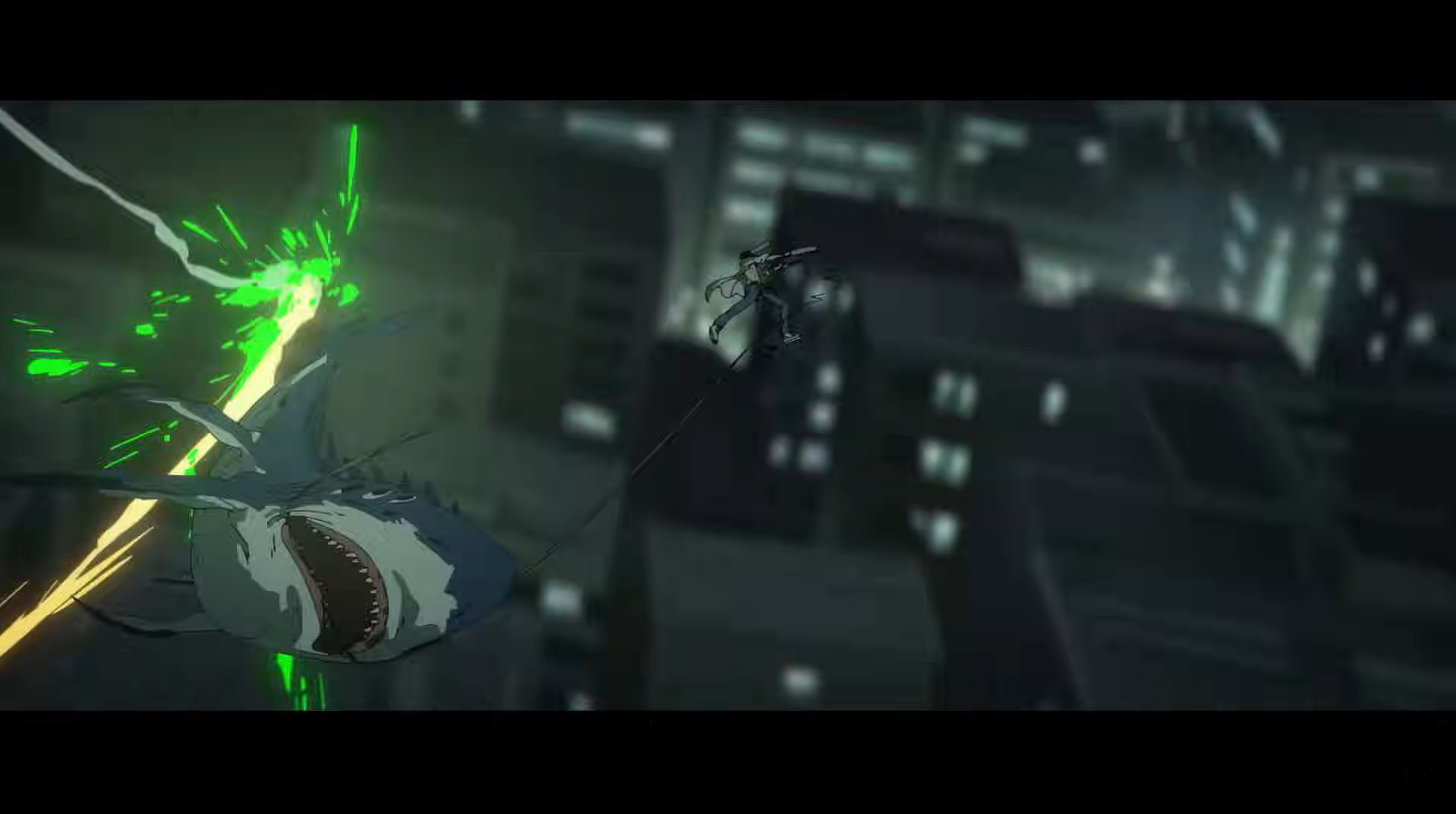
Thankfully, much like the first half of the film, the action is at its most emotionally gripping when both the Bomb Devil and Chainsaw Man share the screen. As I've emphasized, this is the result of the film dedicating a bulk of its runtime to building the plights and chemistry between protagonist and antagonist, with their throwdown simultaneously expanding upon and paying off all this set up. Reze steals the show as a terrifying, yet tragic foe, the building blocks of her character during the movie’s first half paying off dividends here.
Pretty much the same could be said about Denji, the primary lead who also benefits from the film’s humanizing slow burn. In fact, Chainsaw Man doesn’t rev his engines until approximately an hour in the film, but it makes it all the more narratively satisfying when we see the happiness and sorrow that led to these two butting heads. Essentially, the emotional essence of their skirmish boils down to having an argument during a date, only instead of using just words, they slap each other with bombs and chainsaws.
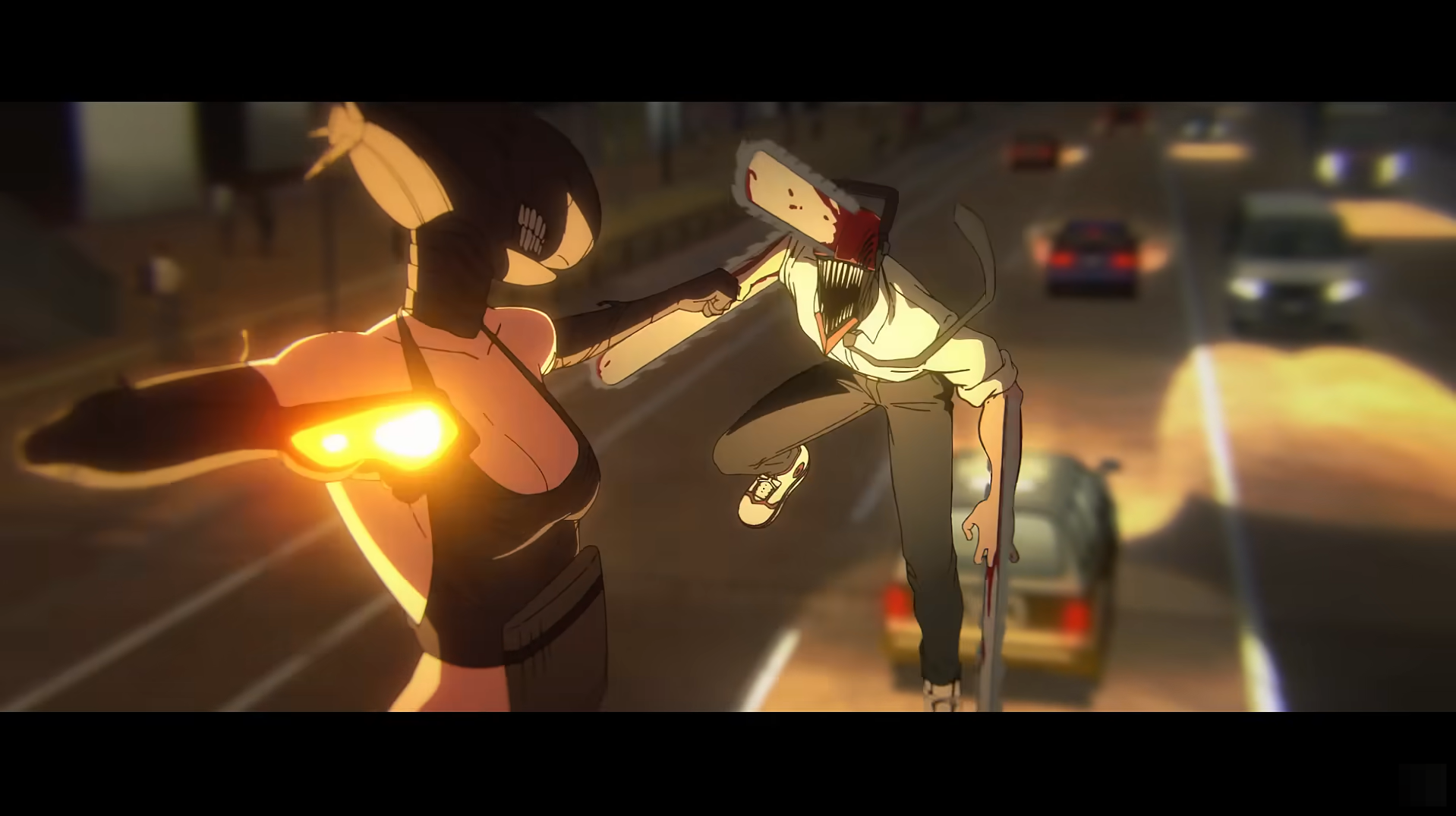
In particular, a dazzling, movie exclusive aerial battle left me awestruck by depth constructed from choreography, visual motifs, and thematic symbolism for the two combatants. It's exceptional filler content done right, reinforcing an already strong foundation and looking good while doing it. Every bout with the Bomb Devil in general is visually stunning, and most importantly clear, offering a mix between close up hand to hand combat and explosive city wide devastation with creative use of her devil powers.
Denji and the rest of the Devil Hunters feel like a stoppable force meeting an immovable object, and Reze’s initial explosion into the battleground capitalizes on this by incorporating light horror imagery that builds tension. It makes it thrilling seeing the Hunters fumble their way to figure out how to take down such an overwhelming foe. Without going into spoilers, the way the destructive battle concludes is one that champions the journey of its characters over the gorgeous spectacle. A beautiful, gut wrenching crescendo of the Chainsaw Man series starting to reveal its hand about the nature of love and human connection.
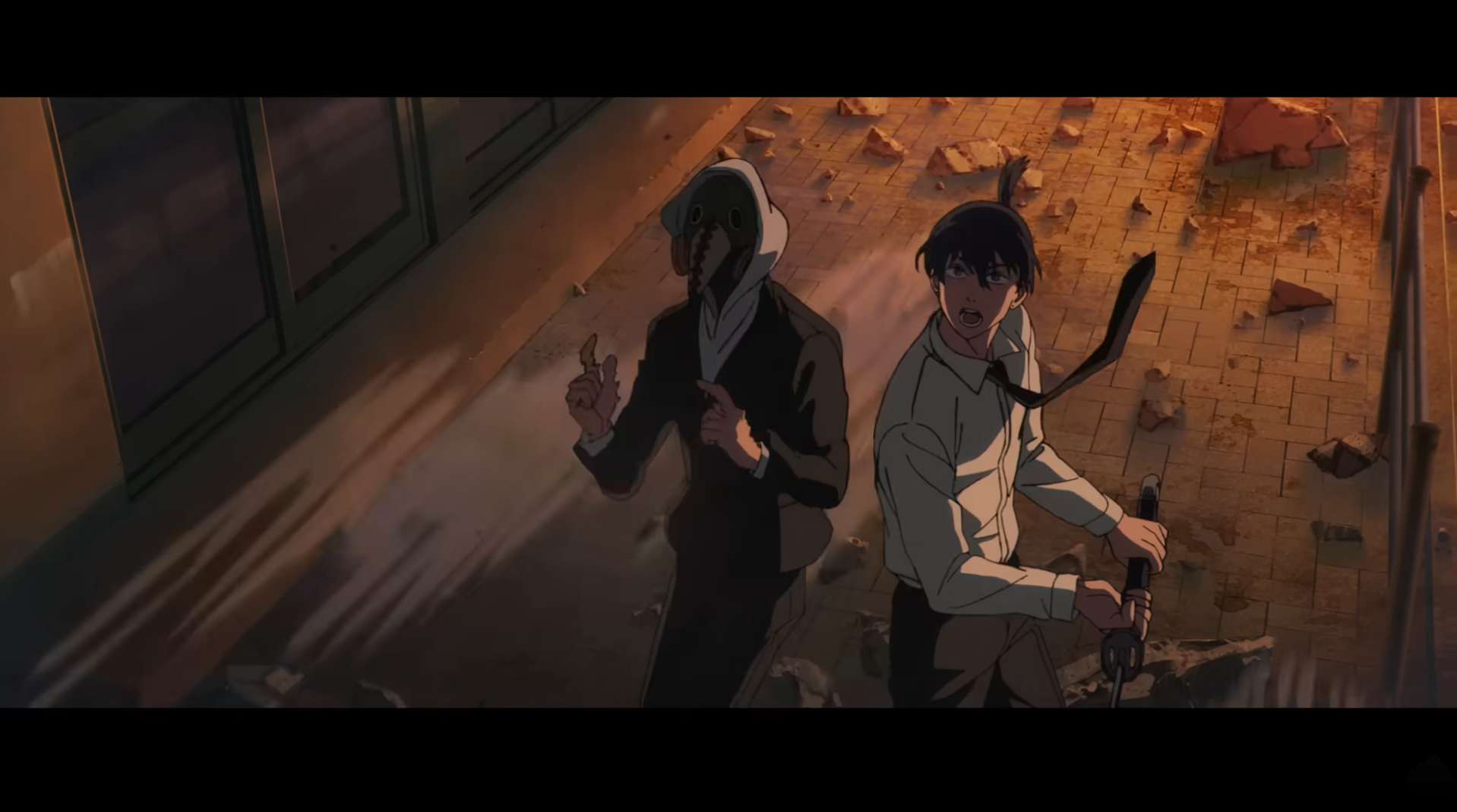
The sound design is also superb, with the rustling of clothes being audible when a person moves during quiet moments, to the bombastically punchy explosions and clashes of steel during the big battle. Both the Japanese and English voice actors provide fantastic performances. While my preference leans more towards the Japanese cast overall, Alexis Tipton’s performance as Reze is the exception. Her performance delivers a fine balance of having a consistent tone of voice, but also slightly altering her delivery to embody the many faces of the Bomb Girl. In contrast, while I enjoy Reina Ueda’s depiction of this character, her deliveries occasionally felt too monotone for such an unhinged character.

Admittedly, this might be due to the language barrier of me not grasping Japanese inflection. Speaking of language, I actually prefer the dub script versus the translations used in the subtitles. By and large, their prose conveys the same points, I just feel that the word choices in the dub contain more bite to it. For example, a character in the subs mentioning how Makima has Denji the palm of her hand, verses the dub dialogue mentioning how red head has the teen “collared”. Same message, only the latter localization has stronger thematic resonance while still sounding natural.
Chainsaw Man - The Movie: Reze Arc
Excellent
Chainsaw Man - The Movie: Reze Arc is a mostly phenomenal adaptation of a critical juncture in Fujimoto’s love letter to life and human connection. A powerful turning point that paves the way for the future of the series to fearlessly immerse itself down the path of taboo, and hauntingly uncomfortable subject matter of pedophilia and sexual assault. Poignant in its thematic framing and character writing, the Reze arc is a deeply tragic, but empowering fiction about a minor, a victim, beginning to claw for agency in his life.
Pros
- Denji and Reze’s tragic characterization and growth
- Delicate, but powerful execution of heavy themes
- Gorgeous cinematography and soundtrack
- Aki and Angel’s side plot
- Emotionally driven and stunning fights (mostly)
Cons
- Padding in Typhoon Devil fight
- Some scene shifts are edited awkwardly
